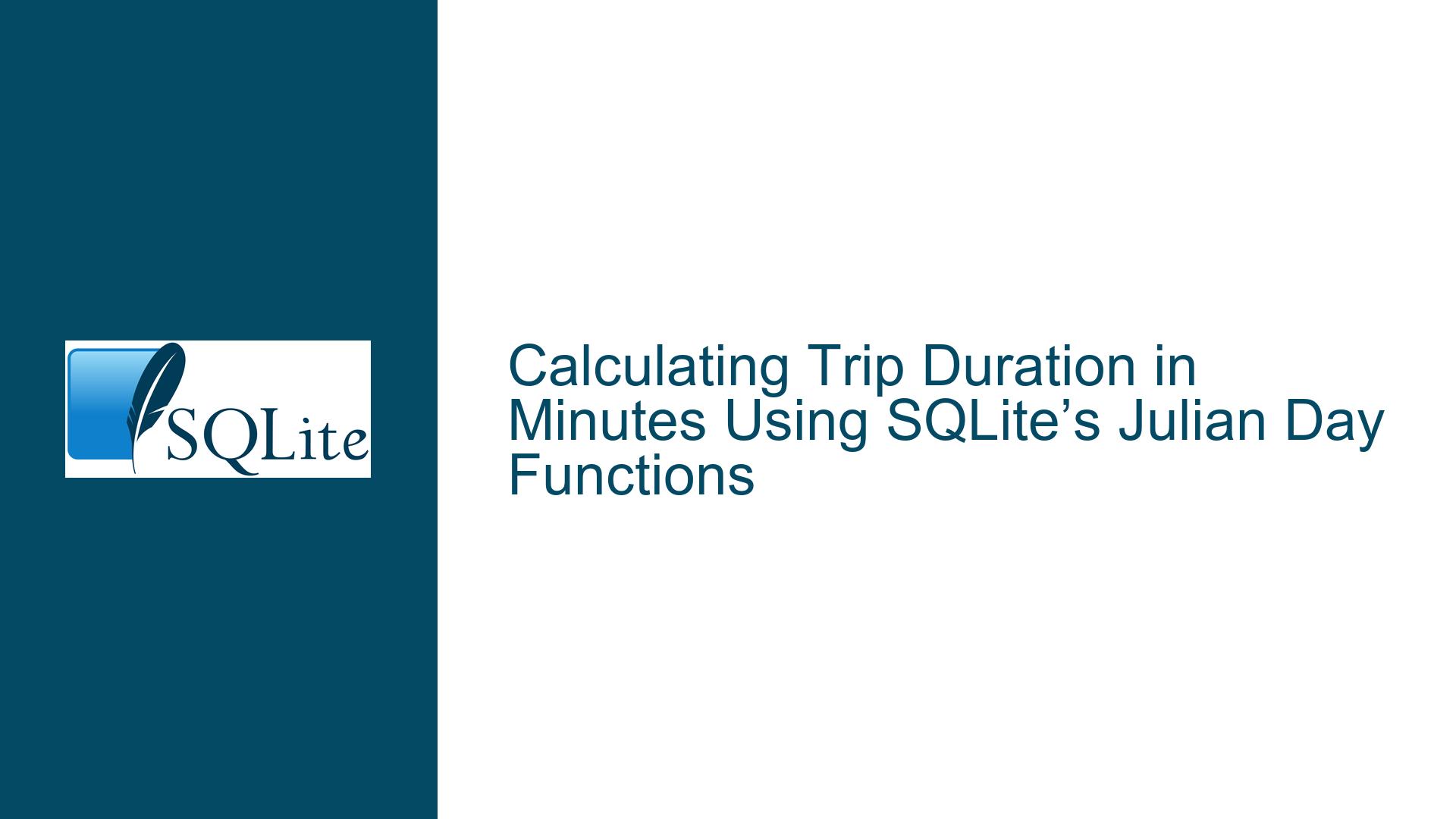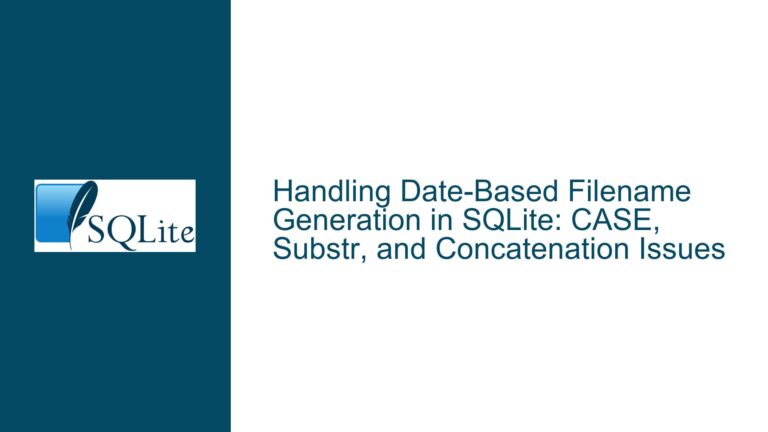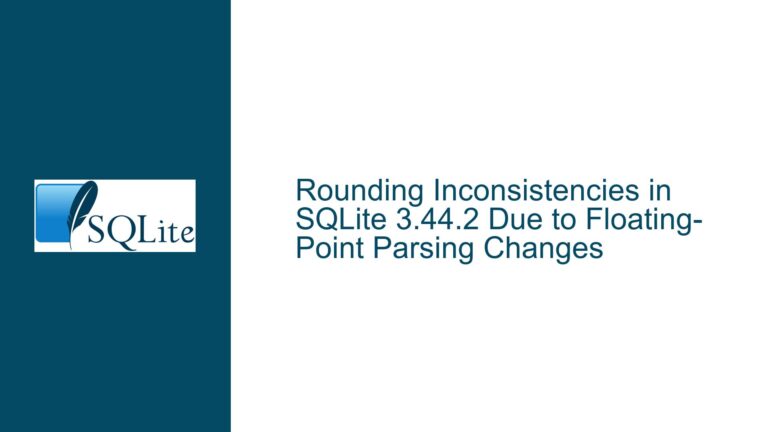Calculating Trip Duration in Minutes Using SQLite’s Julian Day Functions
Understanding the Calculation of Trip Duration in Minutes
The core issue revolves around calculating the duration of a trip in minutes using SQLite’s julianday() function. The goal is to determine the time difference between two timestamps (started_at and ended_at) and convert that difference into minutes. While the concept seems straightforward, the implementation requires a precise understanding of how SQLite handles date and time calculations, particularly with the julianday() function.
The julianday() function returns the Julian Day Number (JDN), which is a continuous count of days since the beginning of the Julian Period (January 1, 4713 BCE). When you subtract the JDN of started_at from the JDN of ended_at, you get the difference in days (including fractional days). To convert this difference into minutes, you must multiply by the number of minutes in a day. However, the initial attempt in the discussion multiplies by 3600, which is incorrect for minutes (it would be correct for seconds). This misunderstanding highlights the need for a deeper exploration of how SQLite handles time calculations and the nuances of converting between units.
The discussion also touches on the broader topic of time measurement, including the distinction between uniform time scales (like UT1) and non-uniform time scales (like UTC), which can introduce complexities such as leap seconds. While these nuances are generally negligible for most applications, they are worth considering for high-precision requirements.
Potential Missteps in Time Calculations and Unit Conversions
One of the primary causes of confusion in this scenario is the incorrect multiplication factor used to convert days into minutes. The initial query multiplies the difference in Julian days by 3600, which is the number of seconds in an hour, not the number of minutes in a day. This error stems from a misunderstanding of the units involved in the calculation. The correct factor for converting days to minutes is 1440, as there are 24 hours in a day and 60 minutes in an hour (24 * 60 = 1440).
Another potential issue is the assumption that the julianday() function operates in a uniform time scale. While SQLite’s julianday() function is based on a uniform time scale (ignoring leap seconds), the timestamps being used (started_at and ended_at) might be in UTC or another time scale that accounts for leap seconds. This discrepancy is generally negligible for most applications, but it can become significant in scenarios requiring high precision or when dealing with long time intervals.
Additionally, the discussion highlights the importance of ensuring that the timestamps are valid and that the ended_at timestamp is always later than the started_at timestamp. If the timestamps are invalid or out of order, the calculation will produce incorrect or nonsensical results. This underscores the need for data validation before performing time-based calculations.
Step-by-Step Guide to Calculating Trip Duration in Minutes
To accurately calculate the trip duration in minutes using SQLite, follow these steps:
Extract the Julian Day Numbers: Use the
julianday()function to convert thestarted_atandended_attimestamps into Julian Day Numbers. This will give you the number of days (including fractional days) since the beginning of the Julian Period.SELECT julianday(started_at) AS start_jdn, julianday(ended_at) AS end_jdn FROM t1;Calculate the Difference in Days: Subtract the Julian Day Number of
started_atfrom the Julian Day Number ofended_atto get the difference in days.SELECT (julianday(ended_at) - julianday(started_at)) AS duration_days FROM t1;Convert Days to Minutes: Multiply the difference in days by 1440 (the number of minutes in a day) to get the duration in minutes.
SELECT (julianday(ended_at) - julianday(started_at)) * 1440 AS duration_minutes FROM t1;Filter Invalid Durations: Ensure that the duration is positive by adding a
WHEREclause to exclude rows whereended_atis earlier than or equal tostarted_at.SELECT (julianday(ended_at) - julianday(started_at)) * 1440 AS duration_minutes FROM t1 WHERE ended_at > started_at;Store the Results in a New Table: If needed, store the results in a new table for further analysis or reporting.
CREATE TABLE trip_durations AS SELECT start_lat, start_lng, rideable_type, member_casual, started_at, ended_at, (julianday(ended_at) - julianday(started_at)) * 1440 AS duration_minutes FROM t1 WHERE ended_at > started_at;Handle Edge Cases: Consider edge cases such as null values, invalid timestamps, or time zones. For example, if the timestamps include time zone information, ensure that they are consistent or convert them to a common time zone before performing the calculation.
Optimize for Performance: If the dataset is large, consider indexing the
started_atandended_atcolumns to improve query performance. Additionally, use batch processing or partitioning techniques to handle large datasets efficiently.Validate the Results: After performing the calculation, validate the results by comparing a sample of the calculated durations with manual calculations or known values. This step is crucial for ensuring the accuracy of the implementation.
By following these steps, you can accurately calculate trip durations in minutes using SQLite’s julianday() function. The key is to understand the units involved in the calculation and to ensure that the data is valid and consistent before performing the calculation. Additionally, consider the broader context of time measurement and the potential impact of leap seconds or other time scale discrepancies, especially for high-precision applications.
This guide provides a comprehensive approach to calculating trip durations in minutes using SQLite, addressing both the technical details and the broader context of time measurement. By following these steps, you can avoid common pitfalls and ensure accurate and reliable results.






